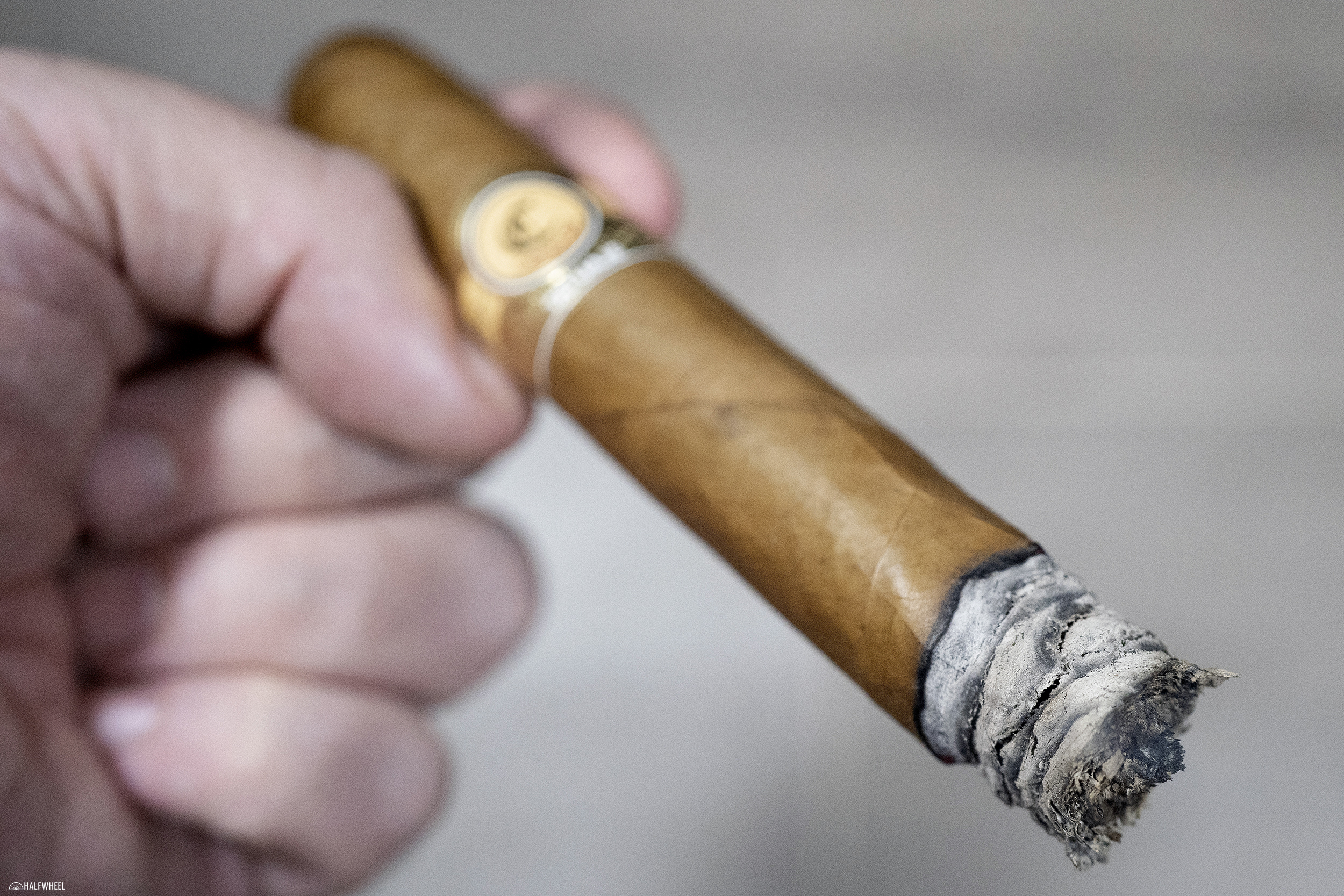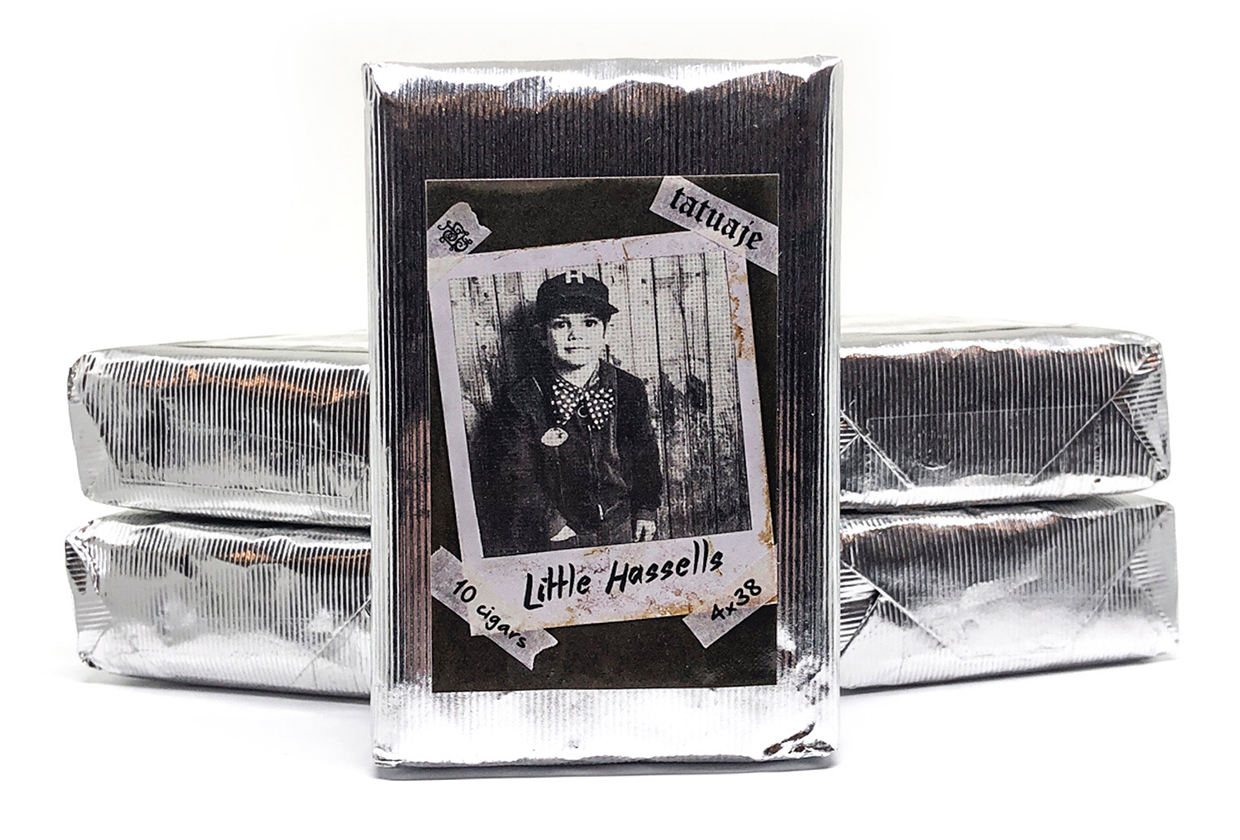As part of its fairly extensive collection of new cigars that debuted at the 2022 PCA Convention & Trade Show, Tautaje added a pair of sizes to it Cabaiguan line.
The first is the Cabaiguan Britanicas Extra, a 5 3/8 x 48 figurado that is priced at $11 per cigar and $264 for a box of 24 cigars; it is a limited release, with 1,000 boxes produced.
The other is this size, the No.752, a double robusto which gets its name from its dimensions as it measures 7 inches long with a 52 ring gauge. It is priced at $12 per cigar and $288 for a box of 24 cigars.
Both sizes use the same blend as the rest of the Cabaiguan line, meaning an Ecuadorian Connecticut wrapper over dual Nicaraguan binders and a Nicaraguan filler. It is a blend styled after flavorful, old-world Cuban cigars, according to the company.
The Cabaiguan line is named for a city in the Cuban province of Sancti Spíritus, which is in the central part of the country. While most people who are familiar with Cuban cigars and tobacco are familiar with the western province of Pinar del Río as being where premium tobacco is grown, Cabaiguan is also known as being a center of tobacco farming and cigar production.
Like the majority of Tatuaje’s portfolio, the Cabaiguan line is produced at My Father Cigars S.A. in Estelí, Nicaragua.
- Cigar Reviewed: Cabaiguan No.752
- Country of Origin: Nicaragua
- Factory: My Father Cigars S.A.
- Wrapper: Ecuador (Connecticut)
- Binder: Nicaragua
- Filler: Nicaragua
- Length: 7 Inches
- Ring Gauge: 52
- Vitola: Double Robusto
- MSRP: $12 (Box of 24, $288)
- Release Date: Aug. 25, 2022
- Number of Cigars Released: Regular Production
- Number of Cigars Smoked For Review: 3
Not surprisingly, the Cabaiguan No.752 is a big cigar, though the more I think of it, the more I realize it’s not quite that big, especially considering that in recent years a 6 x 52 or 6 1/2 x 52 has become the go-to vitola for numerous releases. The wrapper is a light brown, or rather a light tan color, and while the leaf isn’t glossy, it feels slightly oily to my fingers. The flatly laid seams are visible only because of the color of the leaf, which I find a bit odd given how even the color is on the whole, but there is just enough variance to see that thin line wrap its way up the cigar. The fan tail is also quite pronounced, standing tall at attention, with one cigar’s a bit frayed, almost like a flag that has been out in the elements for too long. The cigar is firm but not hard, and rolled well from a visual perspective. The foot has aromas of a pastry tray minus the overt sweetness, though there’s more to it than a simple croissant, for instance. It’s a thick aroma at times that occasionally has condensed milk and other expressions of creaminess. The cold draw is just a touch firm, giving me a sensation that the tobacco is flexing inward a bit with each draw. It’s not concerning, however. The flavor is quite mellow, with a bit of white bread, a little creaminess and a bit of that pastry sensation.
It’s been a while since I have smoked a Cabaiguan of any size, so I’m intrigued to see if the No.752 lives up to what the lighter color of its wrapper would suggest. It is a fairly mellow and slightly toasty start, though there is a bit more pepper than I was expecting. One of the three cigars seems more driven by the Nicaraguan binder and filler more than by the lighter Ecuadorian Connecticut wrapper as the other two are. Ahead of the one-inch mark, there are flavors of dry cornflakes, a bit of creaminess and varying touches of pepper that try and point the way to the earthier core. The one-inch mark brings in a bit of white bread crust, while the retrohale becomes a bit lighter and brighter with white pepper without giving up a heavier black pepper that sets the foundation of the retrohale. I’m not quite able to put my finger on exactly what gives the first third its distinctiveness, other than it feels like some expression of the wrapper; it doesn’t have the sourdough aspect of American-grown Connecticut shade, but it has more character than what I think of from Ecuadorian-grown Connecticut. Outside of the pepper, the first third is mild-plus in flavor, while body is medium-minus and strength is quite mild. Construction is very good, with solid smoke production, an easy draw and no combustion or burn line issues.
As the second third gets underway, white pepper becomes more prominent in retrohales, and the profile begins to settle into a more familiar place as it has the hallmarks of the modern Connecticut-wrapped blend. That starts with a lighter first flavor that gets a bit heavier on the finish while tingling the taste buds with pepper, an experience that can add an exclamation point with a retrohale if so desired. Initially, there aren’t a lot of changes, which means I notice when just a touch of sourdough joins the flavor, as well an even smaller touch of chalky earth, both of which aren’t consistent across the three cigars. While I find my palate gravitating to the creaminess of the Cabaiguan No.752, it appears to becoming less a part of the overall profile, which is picking up more pepper while the bread flavors stand out more. Retrohales continue to add white pepper as the second third progresses, and by the midway point it has reached a point where each retrohale is pretty potent. Not long after the midpoint, it seems that the creaminess is completely gone, as I’m not picking it up any longer, replaced by the bread and doughy flavors that have also been pretty consistent. While one cigar takes on a decent bit of earthiness, the other two don’t embrace that change, with one cigar almost avoiding it completely. It feels like the second third sees the burn rate slow down quite a bit, though the puffs don’t feel labored, the draw is still quite good, there are no combustion issues, and the cigar doesn’t seem over-humidified. Thanks to a bit more pepper, the flavor profile now sits around medium, body is close to medium as well, and strength still sits at mild. Other than the slower burn rate, combustion and construction remain excellent.
While I had become resigned to the idea that the creamy aspect of the Cabaiguan No.752 might have become a thing of the past, it returns early on into the start of the final third and its reappearance is definitely welcomed and appreciated. It ends up serving as a transitional flavor that segues the profile into one that is much earthier. The earthiness is a bit dry and lighter than the heavier, more robust expressions that other Tatuaje blends offer, and the pepper meshes with it quickly and seamlessly. While the creaminess is largely gone in terms of flavor, the smoke’s texture seems to have held onto it, as the smoke has much more body now and coats the palate. I’m not quite sure if the pepper is changing as the burn line gets into the heart of the final third, but as the burn line passes through where the band would be, I get a bit of red chili pepper heat. One cigar also introduces a bit of an Altoids mint flavor that seems to come from the terroir of the tobacco. Despite some variances between the three cigars, the final third has the most character, all of which are a few steps away from the starting point though far from a stark departure. All of the flavor characteristics mellow just a bit in the final third as the cigar comes to a close, and while there is a bit of warmth in the flavor, the cigar doesn’t get overly hot. The finish has just a trace of red chili pepper heat that lingers on my tongue, while the rest of the profile is still thick and palate-coating. Flavor peaks at medium-plus before settling back at medium, body is medium to medium-plus, and strength is mild-plus but far from being impactful. Construction and combustion remain near flawless.
Final Notes
- Outside of the flavor, the one thing about the Cabaiguan No.752 that stands out is how long it seemed to take to smoke. In particular, the second half of the cigar feels like it slows down for no apparent reason, as the cigar doesn’t go out, nor does the draw tighten. If you’re a slow smoker, I’d suggest you’ll need to clear your schedule for upwards of three hours.
- It’s no secret that Tatuaje’s portfolio has often taken design cues from Cuban cigars. The more I looked back at our previous articles about the Cabaiguan brand, the more I kept seeing influences from the Quai d’Orsay brand.
- In the final months of 2020, two new sizes were added to the Cabaiguan line, the No.52, which measures 4 3/8 x 52, and the No.54, a 5 5/8 x 54 robusto extra.
- Those new sizes also brought about the updated bands for the Cabaiguan line, which share a number of design aesthetics with the updated Quai d’Orsay bands released in 2017.
- I really appreciate the embossed Cabaiguan word mark that appears in the gold part of the band. Not only is it incredibly precise, but it gives the band some texture and visual depth.
- All of the Cabaiguan reviews that have been done on this site have been of limited editions released as retailer exclusives, making this the first regular production Cabaiguan reviewed on halfwheel. A big part of that is due to the fact that Cabaiguan debuted before halfwheel was launched.
- I also find it impressive that there have been a number of retailer exclusives of the Cabaiguan line, generally released in celebration of an anniversary. It says something good when a retailer selects a certain brand to mark a milestone anniversary.
- I didn’t get any nicotine strength from the Cabaiguan No.752.
- Final smoking time was two hours and 35 minutes on average.
- The cigars for this review were purchased by halfwheel.
- Site sponsors Atlantic Cigar Co., Corona Cigar Co. and Famous Smoke Shop carry the Cabaiguan No.752.
While I think it's fair to say that Tatuaje has largely made its name on Nicaraguan-forward cigars that fall around the medium-full mark in terms of flavor, it's certainly not all is in the company's portfolio, nor is it all that Pete Johnson is capable of producing. The Cabaiguan line is not simply an afterthought or an option to have to offer consumers who like milder profiles, as this new double robusto size offers a very enjoyable profile on the milder end of the spectrum that still delivers an impressive profile. The profile is largely what an informed consumer might expect from the blend details, with a lighter creaminess intertwined with a decent amount of light but punchy pepper for the bulk of the cigar, and rarely is there a puff that seems out of balance. My only real issue with the Cabaiguan No.752 is simply that it is a lot of cigar, but if you've got the time, the cigar certainly has the flavor and performance.






